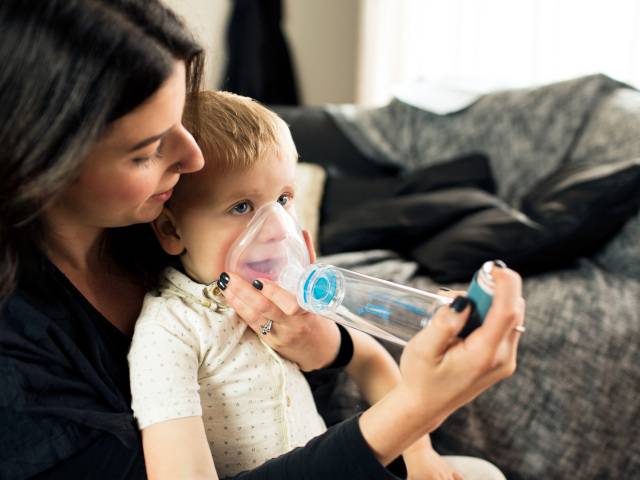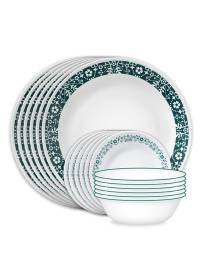Asthma Flare-Ups

Wet weather triggers can lead to asthma flare-ups
Icy blasts are hitting much of eastern Australia and weather forecasters have predicted rainfall is likely to be above average for much of Australia from July to September and even worse for the eastern two-thirds of the mainland.
National Asthma Council's Sensitive Choice Program Manager Adele Taylor says winter is a key time when mould creeps in, releasing tiny spores into the air, which can trigger asthma and allergy symptoms.
"For the 2.7 million Australians living with asthma it is important to take control now to ensure you have a healthy home as higher indoor humidity levels make it easier for mould and dust mites to multiply.
"The symptoms can include nose, eye, and skin irritation, sneezing or wheezing, and severe breathing difficulties in some people," Ms Taylor says.
Ms Taylor says mould has a habit of hiding and it spreads to places you cannot see.
"Mould thrives in warm, damp environments and can make itself at home anywhere there is low air flow or excess moisture, such as built-in wardrobes and in bedrooms with ensuite bathrooms.
"Be aware of signs such as condensation on your windows due to lack of air circulation, or a crack in a bathroom tile or pipe.
"To help keep this space healthy, focus on good natural air circulation and use extractor fans. Remember it is important to find and fix the source of mould, as well as cleaning visible mould, to stop it from regrowing," she said.
Another common asthma trigger during winter can be dust mites which thrive when indoor humidity is high.
"These microscopic creatures feed off skin cells and grow well in humidity in bedding, blankets and winter clothing that has been left in cupboards all year.
"Dust mites are nearly impossible to eradicate, but as with mould, reducing humidity in the home can help to keep them under control.
"The best strategy is to kill house dust mites, remove the allergen they produce and reduce areas where they can live and breed," she said.
Some key tips from Sensitive Choice to make your winter a healthy one:
• Wash sheets and pillowcases in water hotter than 55°C, or if you can't wash in hot water, throw them in the tumble dryer even for a few minutes at a high temperature
• Cover mattresses, quilts and pillows with dust mite-resistant cases and underlays
• Using extractor fans in bathrooms, kitchens and laundries can help with natural ventilation to reduce the likelihood of mould or mildew growth
• Sealing leaks in bathrooms and roofs
• Drying or removing wet carpets
• Treating rising damp as soon as it is detected
• If there is any visible mould, remove it with fermented vinegar and remember mould is not always visible, so it is important to find and stop the source of the mould
• If you are sensitive to strong odours, wear a mask or ask someone else to do it for you
• When cleaning carpets and soft furnishings, use a vacuum cleaner with an asthma and allergy sensitive HEPA filter. For hard floors like timber or tiles, use a damp or electrostatic cloth or steam mop
• Try to keep bedrooms dry and well ventilated by opening windows regularly and leaving wardrobe doors ajar
• Cleaning can be a challenge for people with asthma and allergies, so look out for sensitive household cleaning products with fewer harsh chemicals and no fragrances
• Consider buying a dehumidifier to remove moisture and/or an air purifier with a HEPA filter– to reduce air borne mould spores.
"People need to know what their asthma triggers are including seasonal changes and have regular check-ups with your GP," Ms Taylor said.
National Asthma Council's Sensitive Choice Program Manager Adele Taylor says winter is a key time when mould creeps in, releasing tiny spores into the air, which can trigger asthma and allergy symptoms.
"For the 2.7 million Australians living with asthma it is important to take control now to ensure you have a healthy home as higher indoor humidity levels make it easier for mould and dust mites to multiply.
"The symptoms can include nose, eye, and skin irritation, sneezing or wheezing, and severe breathing difficulties in some people," Ms Taylor says.
Ms Taylor says mould has a habit of hiding and it spreads to places you cannot see.
"Mould thrives in warm, damp environments and can make itself at home anywhere there is low air flow or excess moisture, such as built-in wardrobes and in bedrooms with ensuite bathrooms.
"Be aware of signs such as condensation on your windows due to lack of air circulation, or a crack in a bathroom tile or pipe.
"To help keep this space healthy, focus on good natural air circulation and use extractor fans. Remember it is important to find and fix the source of mould, as well as cleaning visible mould, to stop it from regrowing," she said.
Another common asthma trigger during winter can be dust mites which thrive when indoor humidity is high.
"These microscopic creatures feed off skin cells and grow well in humidity in bedding, blankets and winter clothing that has been left in cupboards all year.
"Dust mites are nearly impossible to eradicate, but as with mould, reducing humidity in the home can help to keep them under control.
"The best strategy is to kill house dust mites, remove the allergen they produce and reduce areas where they can live and breed," she said.
Some key tips from Sensitive Choice to make your winter a healthy one:
• Wash sheets and pillowcases in water hotter than 55°C, or if you can't wash in hot water, throw them in the tumble dryer even for a few minutes at a high temperature
• Cover mattresses, quilts and pillows with dust mite-resistant cases and underlays
• Using extractor fans in bathrooms, kitchens and laundries can help with natural ventilation to reduce the likelihood of mould or mildew growth
• Sealing leaks in bathrooms and roofs
• Drying or removing wet carpets
• Treating rising damp as soon as it is detected
• If there is any visible mould, remove it with fermented vinegar and remember mould is not always visible, so it is important to find and stop the source of the mould
• If you are sensitive to strong odours, wear a mask or ask someone else to do it for you
• When cleaning carpets and soft furnishings, use a vacuum cleaner with an asthma and allergy sensitive HEPA filter. For hard floors like timber or tiles, use a damp or electrostatic cloth or steam mop
• Try to keep bedrooms dry and well ventilated by opening windows regularly and leaving wardrobe doors ajar
• Cleaning can be a challenge for people with asthma and allergies, so look out for sensitive household cleaning products with fewer harsh chemicals and no fragrances
• Consider buying a dehumidifier to remove moisture and/or an air purifier with a HEPA filter– to reduce air borne mould spores.
"People need to know what their asthma triggers are including seasonal changes and have regular check-ups with your GP," Ms Taylor said.
MORE



